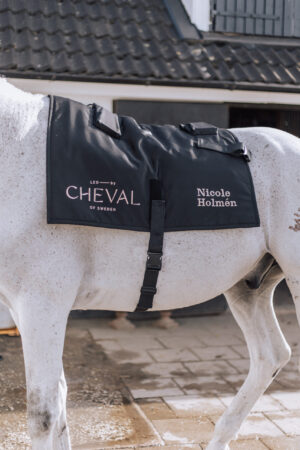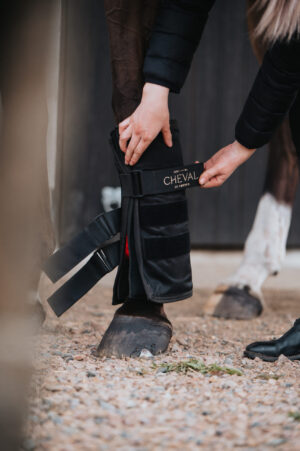The best LED Treatment System for your horse
Choosing the right LED Treatment System for your horse is essential for its health and recovery. This guide gathers key comparison points to help you find the best system for your horse’s unique needs. Throughout this article, we refer to the light therapy system as LLLT (Low-Level Laser Therapy).
The Effect: mW or mW²?
One of the most important factors when comparing brands and products is the effect. It’s crucial to evaluate the system’s actual output, as it can vary significantly.
- Power Measurement: Power is defined as the total energy emitted per unit of time, typically measured in mW(milliwatts). This parameter is essential for determining the therapeutic dose of laser energy delivered to the treatment area.
- mW² Consideration: While mW² (milliwatts per square meter) is a physics parameter used to describe radiation intensity on a surface, it is not typically relevant in LLLT comparisons.
Several factors, including wavelength, dose, and treatment time, are also critical in determining the optimal therapeutic dose of LED Treatment.
The Wavelengths
The specific wavelengths used in LED Treatment are vital, as different wavelengths penetrate tissues to varying depths and affect cells differently.
- Wavelength Range: LLLT typically uses wavelengths of 600 to 900 nanometers (nm), within the visible and near-infrared regions of the electromagnetic spectrum.
- Tissue Penetration:
- Shorter wavelengths (e.g., 600-700 nm) are absorbed by superficial tissues like the skin.
- Longer wavelengths penetrate deeper into tissues such as muscles and joints.
- Shorter wavelengths, like blue light, have minimal penetration and are primarily used for acne treatment, plant growth, and surface disinfection.
Different cells and tissues absorb various wavelengths differently. Mitochondrial chromophores absorb near-infrared light, increasing ATP (adenosine triphosphate) production.
The Number of Lights
The number of lights directly impacts the system’s output. More lights mean a wider treatment area and higher overall effectiveness.
The Design
Consider the versatility of the system. Some are designed for specific applications, while others offer broader usage. Choose a system that aligns with your horse’s specific needs.
The Materials
Durability, safety, and ease of cleaning are crucial when considering the materials used in the light therapy system’s construction. Horses can be unpredictable, so selecting robust equipment is essential.
Warranty
Another critical factor is the manufacturer’s warranty. A product designed for equestrian use should meet high standards, so it’s essential to examine the coverage and duration of the guarantee before purchasing.
Price and Payment Terms
Finally, consider the price, shipping costs, payment options, and delivery times when choosing a light therapy system. For personal guidance and recommendations, you’re always welcome to contact us



